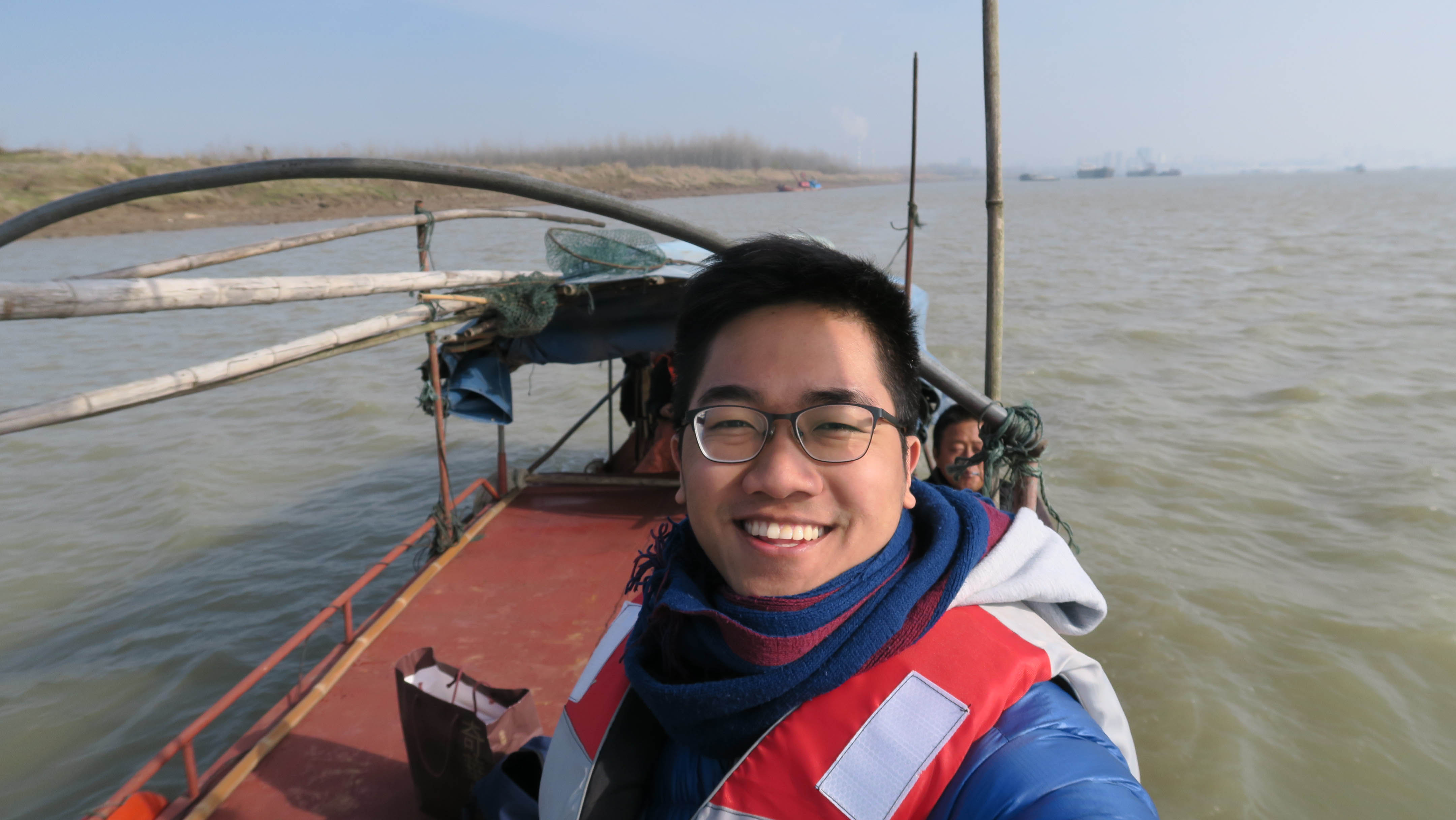



Background information
The Yangtse Finless Porpoise is listed as ‘Critically Endangered’ on the IUCN’s Red List. Currently, less than 1000 Yangtze finless porpoises remain in the whole Yangtze river, where the Anqing river course has a relatively denser population of finless porpoises. This can be attributed to the extensive and heavy urban development on both sides of the river and also different kinds of human activities (e.g. overfishing), causing the habitats of finless porpoises to be destructed or destroyed. Consequently population numbers shrank significantly. To halt the decreasing trend, Ex-situ and In-situ conservation areas have been built along the Yangtse River to maintain a suitable habitat environment for finless porpoises, allowing them to mate with another species and reproduce to restore the population.
Research Findings
We have done 4 days of boat survey along the Yangtse River in total, with 2 days each for upstream and downstream. As finless porpoises will roll out of the water surface to breathe around every 30 seconds, our main research method was to observe the Yangtse River surface by our eyes to spot the breathing actions of the Yangtse finless porpoises. However, due to bad weather, cold temperature and foggy conditions, we were unable to spot any of the species on the first 3 days of our boat survey trips.
Instead of finless porpoises, we observed a lot of heavy urban development along the Yangtse River and a lot of huge ships including coal-fired power plants, piers for coal transportation and gigantic cargo ships travelling along the river, posing huge threats to the habitat of the Yangtse finless porpoises. Also, finless porpoises are jeopardized by the deteriorated water with serious dermatosis, direct injuries by boat engines, destructive fishing methods and by-catch. Extensive and intensive fishing have also depleted the food source of finless porpoises which further worsens its predicament.
Fortunately, on our last day of survey trip, the weather was great for research and we could finally observe up to around 20 finless porpoises. Despite the low observed amount, we were thrilled every time we were able to spot a porpoise. To our surprise, we were also able to observe a pair of ‘Mother and son’ porpoises which are rarely sighted together.
Porpoises Future
During our visit to a local university, we conducted interviews with professors and researchers on their conservation work on Yangtse finless porpoise. When asked about their stance on the fate of the species, we were surprised by the optimism they had about the future and how they believe the population will one day grow and increase to a healthy level. However, they admitted the measures that have been done, including the protecting areas, are only short term solutions towards the problem. Instead, stricter government policies and awareness among the general public on the conditions of the species should be imposed in order to improve the habitat and the water quality of the Yangtse River so that the species can be able to live in the nature, safe and free.
Conclusion
My journey of participating in research and conservation work on Yangtse finless porpoises has not only allow me to get in touch and understand more about the conditions of the species, but also made me reflect on the passion and courage needed for doing conservation work. Through interviews and chatting with researchers and professors from the local university, I realized the amount of passion and ambition each and every one of them holds into protecting the population of the species. I also saw the courage they have in giving up better options for life in order to follow and contribute to what they care about. I now have immense appreciation and respect to all the conservation workers and researchers for persevering in what they believe deeply in.
‘For in the end, we will conserve only what we love; we will love only what we understand; we will understand only what we are taught.’ Start to learn more about our planet and act together to protect what is left today.